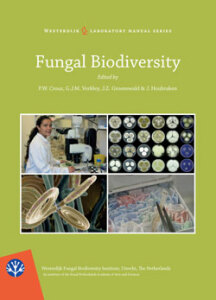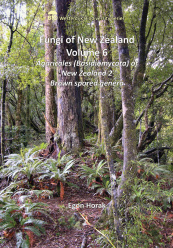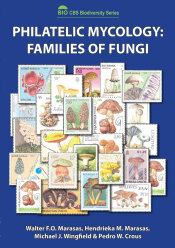Westerdijk Laboratory Manual Series No. 1 Fungal Biodiversity(2019)-P.W. Crous, G.J.M. Verkleij, J.Z. Groenewald & J. Houbraken
2 187,00 Kč vč. DPH
2 187,00 Kč bez DPH
Fungal Biodiversity
|
Country | % VAT (books) | % VAT | |
|---|---|---|---|
| DE | 7 | 19 | |
| HU | 5 | 27 | |
| AUT | 10 | 20 | |
| BE | 6 | 21 | |
| BGR | 9 | 20 | |
| DNK | 25 | 25 | |
| EST | 9 | 24 | |
| FIN | 14 | 25,5 | |
| FR | 5,5 | 20 | |
| HR | 5 | 25 | |
| IRL | 0 | 23 | |
| IT | 4 | 22 | |
| CY | 3 | 19 | |
| LTU | 9 | 21 | |
| LV | 5 | 21 | |
| LU | 3 | 17 | |
| MT | 5 | 18 | |
| NLD | 9 | 21 | |
| PL | 5 | 23 | |
| PR | 6 | 23 | |
| RO | 11 | 21 | |
| GRC | 6 | 24 | |
| SVK | 5 | 23 | |
| SI | 5 | 22 | |
| ESP | 7 | 21 | |
| SWE | 6 |
25 |
Cena platí pouze pro české zákazníky. Vzhledem k novému nařízení Evropského parlamentu musí být konečná cena od 1. července 2021 kalkulována podle země konečného určení. Platnou sazbu DPH ve vaší zemi naleznete v tabulce výše (výše DPH se může v jednotlivých státech v rámci času pohybovat).
https://ec.europa.eu/taxation_customs/tedb/#/vat-search/vat-search-result
Záruka (měsíce): 24
Skladem: ano
The second edition of the highly popular “Westerdijk Laboratory Manual Series No. 1: Fungal Biodiversity” is now available. The volume (hard copy, full colour) is extended with 150 pages. This Laboratory Manual focuses on techniques for isolation, cultivation, molecular and morphological study of filamentous fungi and yeasts. It has been developed as a general text over many years, which is based on the annual mycology course given at the Westerdijk Fungal Biodiversity Institute in Utrecht, The Netherlands.
The manual provides an introductory text to systematic mycology, starting with a concise treatise of Hyphochytridiomycota and Oomycota, which have long been subject of study by mycologists, but are now classified in the Kingdom Chromista. These are followed by sections on the groups of “true fungi”: Chytridiomycota, Blastocladiomycota, “Zygomycota”, Ascomycota and Basidiomycota. This descriptive part is illustrated by numerous full-colour figures of life-cycles and schematic line-drawings as well as photographic plates depicting most of the structures essential for the study and identification of these fungi. Special attention is given to basic principles of working with axenic cultures, good morphological analysis, and complicated issues for beginners such as conidiogenesis and the understanding of life-cycles. Exemplar taxa for each of these fungal groups, in total 69 mostly common species in various economically important genera, are described and illustrated in detail. In a chapter on general methods a number of basic techniques such as the preparation and choice of media, microscopic examination, the use of stains and preparation of permanent slides, and herbarium techniques are explained. Most importantly, this volume also sees the integration of asexual and sexual genera, following the abandonment of dual nomenclature for Fungi. Further chapters deal with commonly used molecular and phylogenetic methods and related identification tools such as BLAST and DNA Barcoding, fungal nomenclature, ecological groups of fungi such as soil-borne and root-inhabiting fungi, water moulds, and fungi on plants and of quarantine importance. Some topics of applied mycology are also treated, including fungi in the air- and indoor environment and fungi of medical importance. Common mycological terminology is explained in a glossary, with reference to illustrations in the book. A chapter providing more than 60 mycological media for fungal cultivation, and a comprehensive list of cited references are also provided. The book is concluded with an index, and dendrogram reflecting our current understanding of the evolutionary relationships within the Fungi.
Hardcover, bound, 425 pp, full colour
ISBN:978-94-91751-16-5
 čeština
čeština




